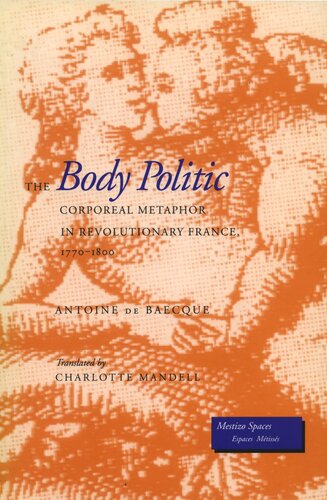

Most ebook files are in PDF format, so you can easily read them using various software such as Foxit Reader or directly on the Google Chrome browser.
Some ebook files are released by publishers in other formats such as .awz, .mobi, .epub, .fb2, etc. You may need to install specific software to read these formats on mobile/PC, such as Calibre.
Please read the tutorial at this link: https://ebookbell.com/faq
We offer FREE conversion to the popular formats you request; however, this may take some time. Therefore, right after payment, please email us, and we will try to provide the service as quickly as possible.
For some exceptional file formats or broken links (if any), please refrain from opening any disputes. Instead, email us first, and we will try to assist within a maximum of 6 hours.
EbookBell Team

0.0
0 reviewsThis is a remarkable history of the French Revolution told through the study of images of the body as they appeared in the popular literature of the time, showing how these images were at the very center of the metaphoric language used to describe the revolution in progress. The author draws upon some 2,000 texts, pamphlets, announcements, opinions, accounts, treatises, and journals to exhume the textual reality of the Revolution, the body of its history. The deployment of bodily images—the degeneracy of the nobility, the impotence of the king, the herculean strength of the citizenry, the goddess of politics appearing naked like Truth, the bleeding wounds of the Republican martyrs—allowed political society to represent itself at a pivotal moment in its history. Searching for "the body of history," the author finds three forms of political representation: first, the metaphysical representation of the body as an anthropomorphic symbol of the political system—the transition of sovereignty from the body of the king to the great citizen body; second, the metaphorical representation of the body as a tool of discourse for persuasion—the embodied tale of the revolutionary epic; and third, the representation of the body in public ceremonies—street carnivals and funerals. The introductory chapter studies the symbolic defeat of the king's body and the transfer of virility to the Republican body. Later chapters examine the new patriotic body as described in medical terms; paintings by David that show the revolutionary hero as "political body"; the Revolutionary subject conceived in terms of regeneration; its opposite, the aristocratic body, conceived as monstrous; and the bestial images projected onto Marie Antoinette.